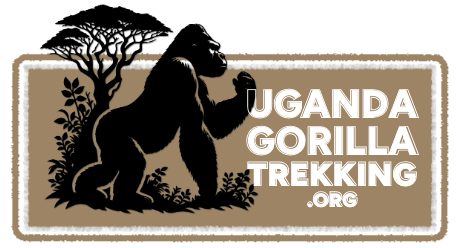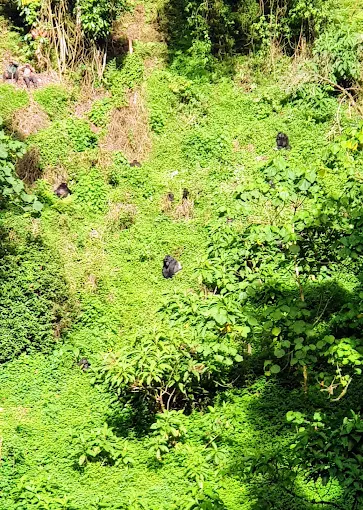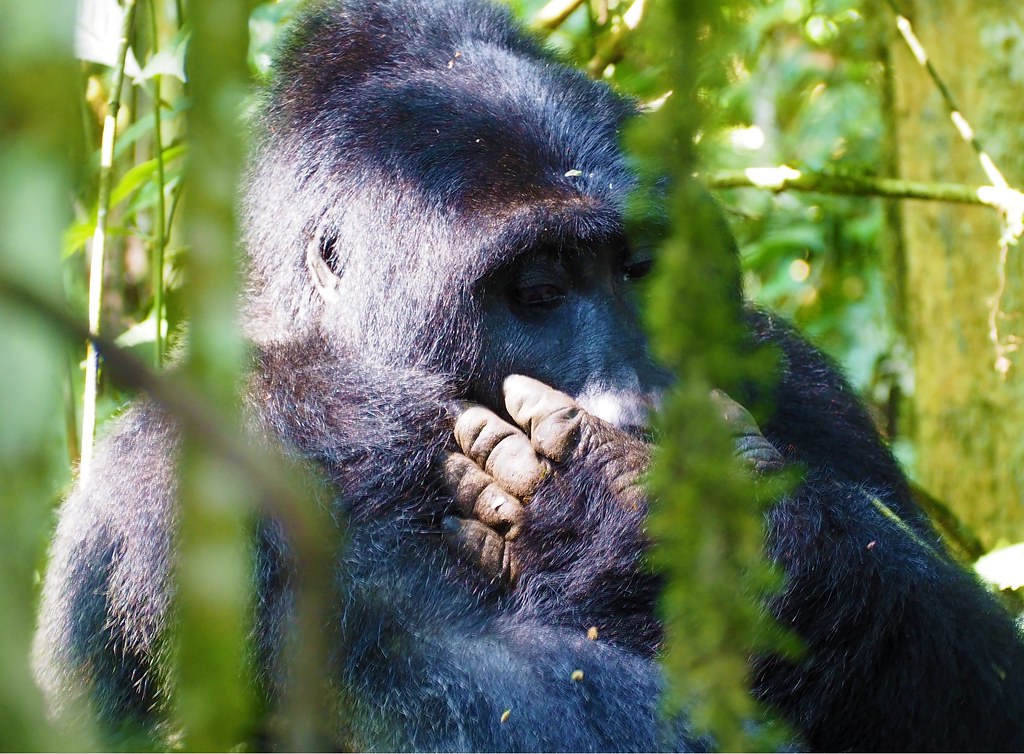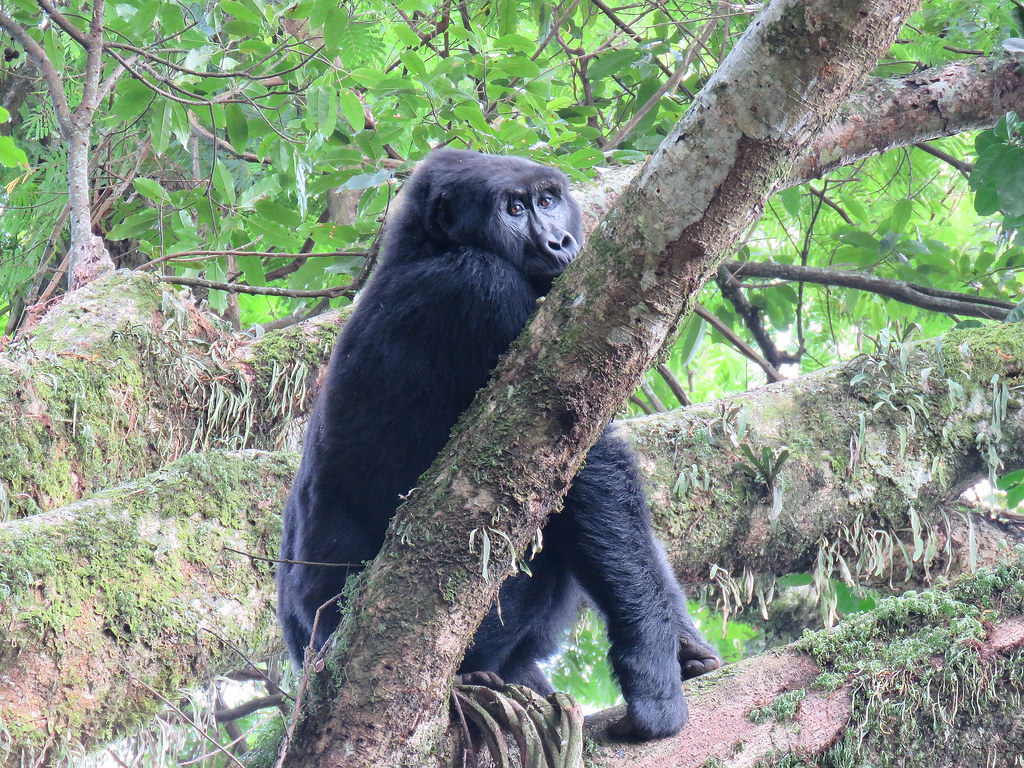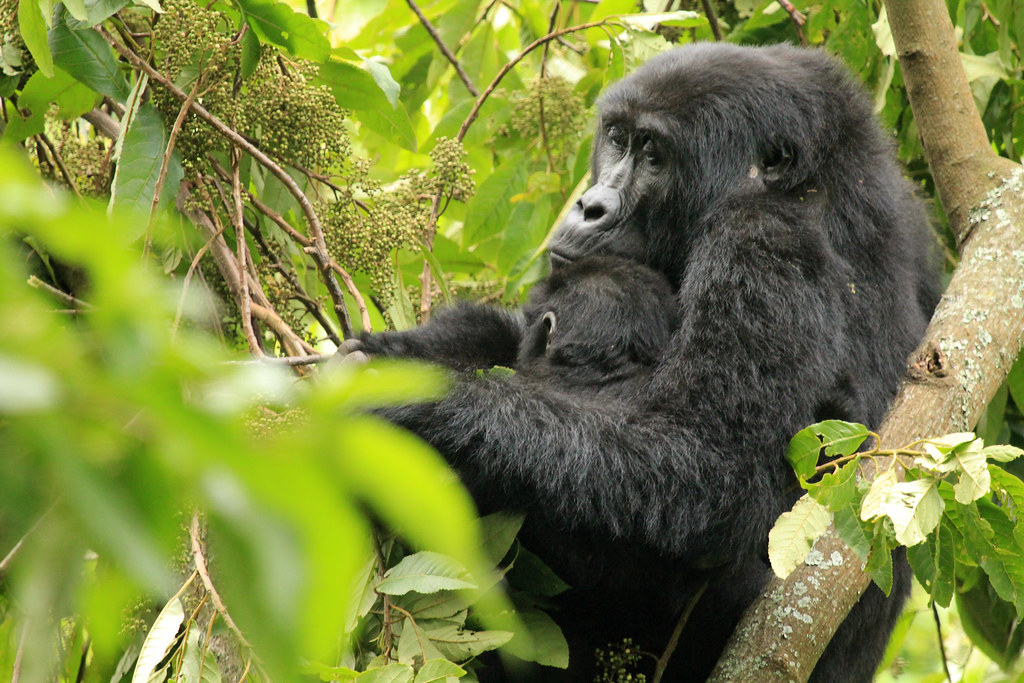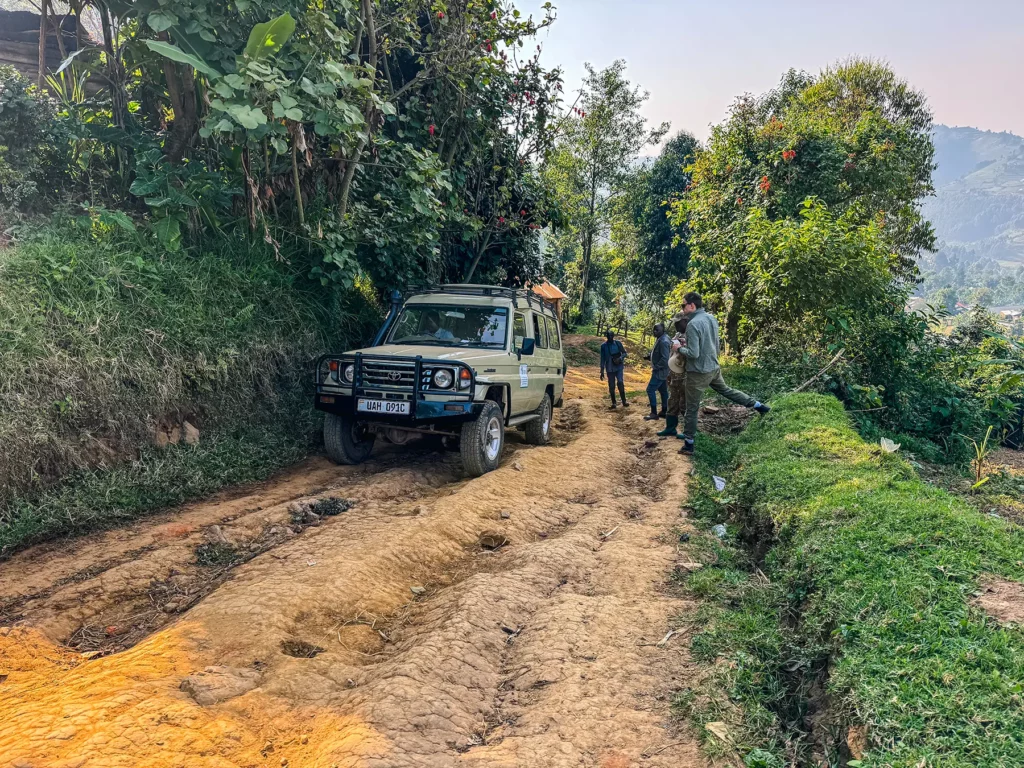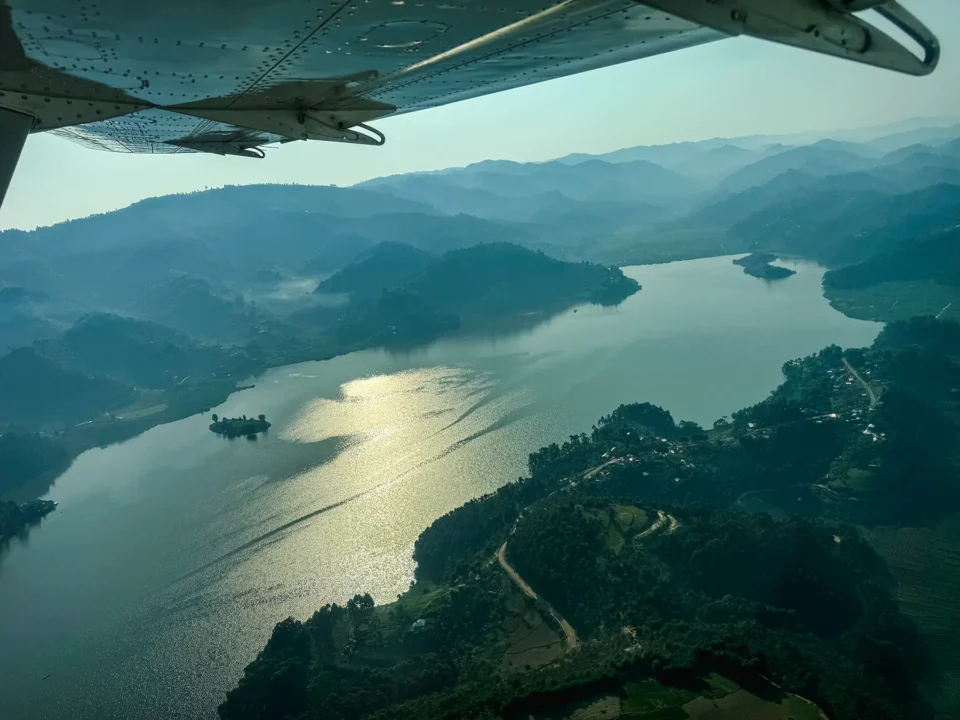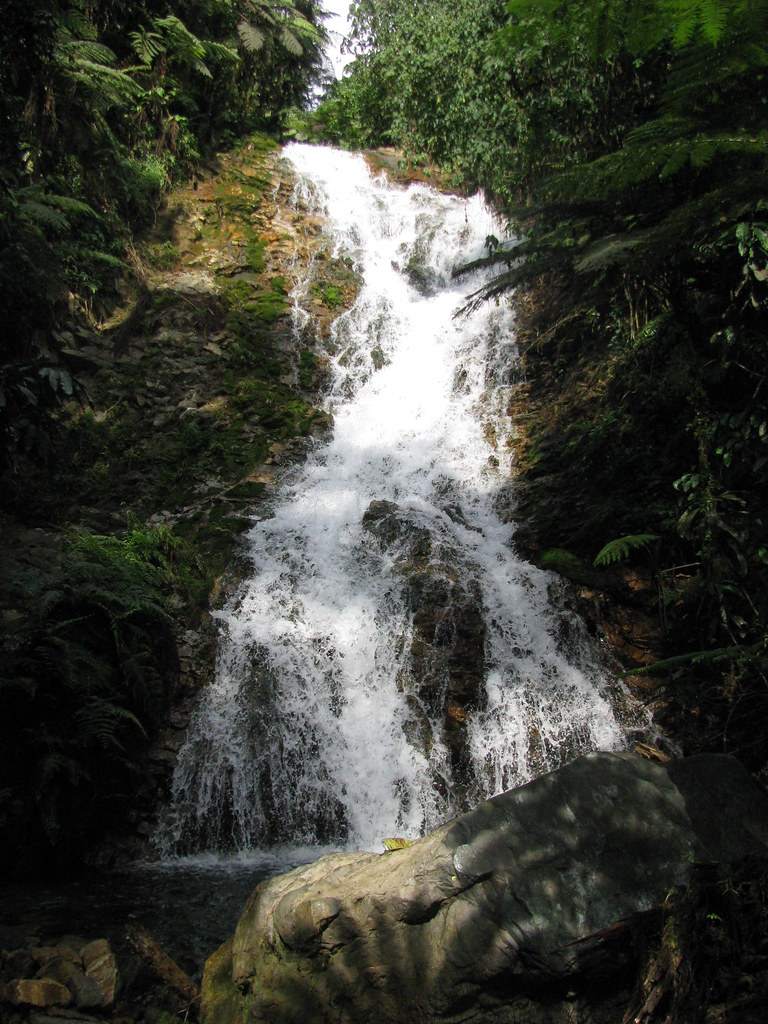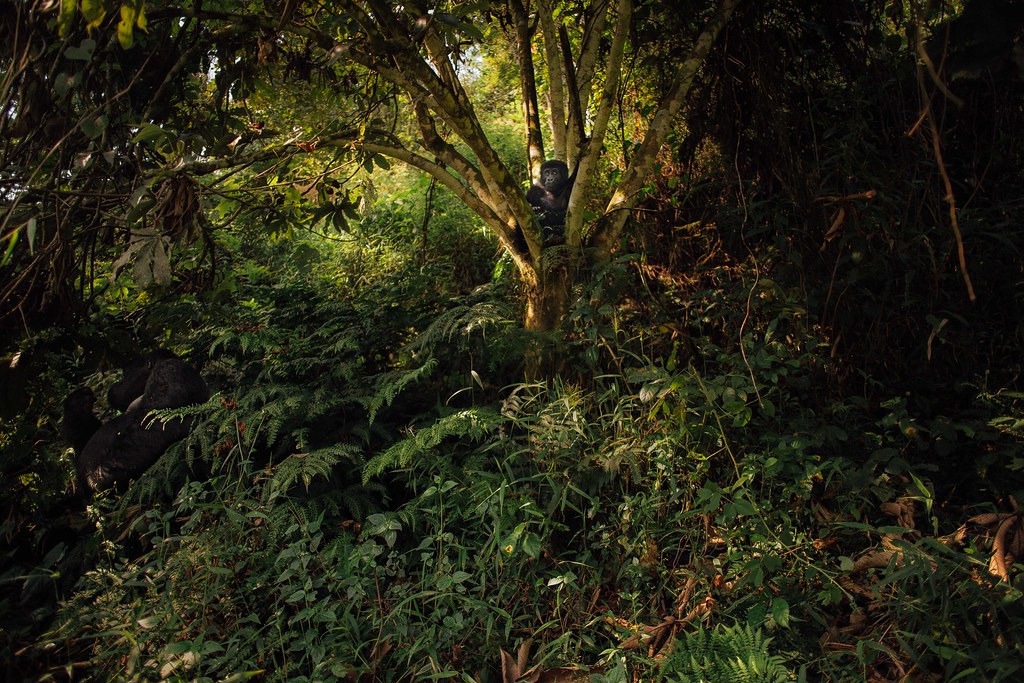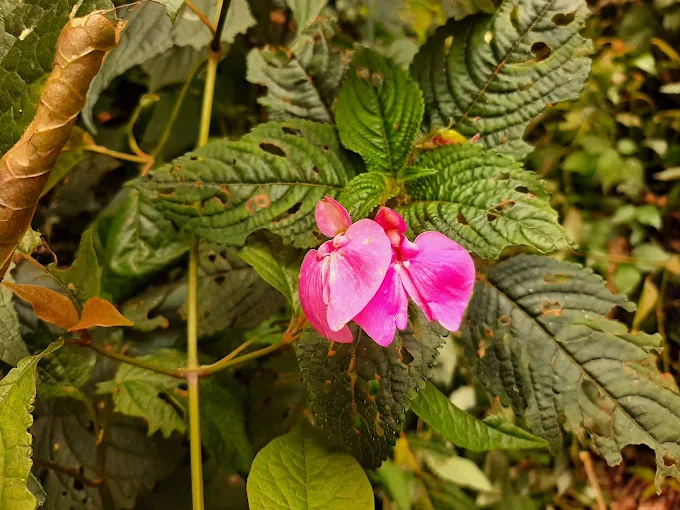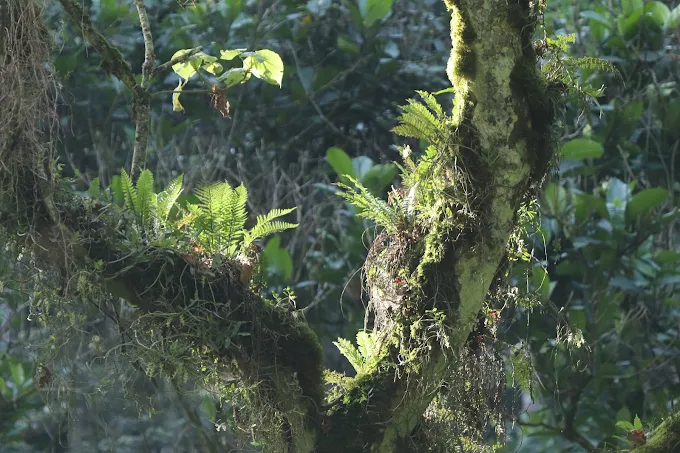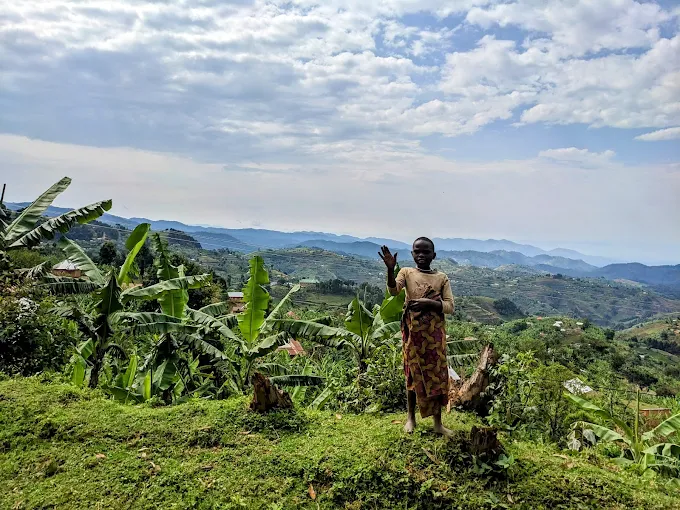Where the soul of the forest whispers in the mist
Bwindi Impenetrable National Park lies within the highland zone of southwestern Uganda, spanning across the districts of Kanungu, Rubanda, and Kisoro. Covering about 331 square kilometers, the park sits on the edge of the Albertine Rift Valley, an area known for its dramatic elevation shifts and high ecological importance. Bwindi’s geography is defined by its steep slopes, deep valleys, and interwoven river networks, making it one of the most topographically diverse protected areas in East Africa.
The park’s altitude ranges from 1,160 to 2,607 meters above sea level, creating a variety of microclimates and ecological zones within a relatively compact space. This variation supports a wide range of plant and animal species, some of which are found nowhere else on earth. The higher elevations, particularly in the southern and eastern sectors, are characterized by montane forests and mist-covered ridgelines, while the lower altitudes host transitional and tropical rainforest vegetation.
Numerous small rivers and streams—fed by consistent rainfall—flow through Bwindi, eventually draining into Lake Edward. These waterways help sustain both wildlife and surrounding communities. The park’s dense forest and irregular terrain have historically limited human access, which is one reason why it has remained such an important habitat for endangered species like the mountain gorilla.
Understanding Bwindi’s geography is essential for visitors, as it directly impacts trekking difficulty, travel logistics, and wildlife viewing opportunities. Its rugged features are not just scenic—they are a core part of what makes this rainforest one of the most biologically important landscapes in Africa.
So lace up your boots, grab your camera, and prepare to meet the wild — this is where your gorilla trekking dreams and unforgettable safari adventures truly begin.
Truly Iconic Highlights in Uganda
Trek through Bwindi’s mystical rainforest and meet the endangered mountain gorillas in their breathtaking natural home.
Encounter mountain gorillas and golden monkeys on Mgahinga’s misty volcanic trails, where culture and alpine wildlife thrive together.
Unwind after your trek with a peaceful canoe ride across Lake Bunyonyi, Uganda’s most tranquil and scenic highland lake.
Enhance your gorilla trekking safari with an optional chimpanzee encounter in Uganda’s lush forests, adding depth and diversity to your primate adventure
Bwindi Geography – The Natural Terrain of Uganda’s Gorilla Heartland
Bwindi Impenetrable National Park is one of Uganda’s most rugged and visually striking landscapes. Located along the edge of the Albertine Rift Valley in southwestern Uganda, the park is defined by steep ridges, deep valleys, and densely forested mountains. This dramatic geography is not only responsible for Bwindi’s raw beauty but also plays a critical role in shaping its climate, biodiversity, and world-famous gorilla trekking experiences.
Bwindi’s terrain is challenging, ancient, and largely untouched, making it one of the last true rainforest strongholds in East Africa. Its physical isolation and complex landforms have allowed wildlife to thrive with minimal disturbance for thousands of years.
Where Bwindi Is Located
Bwindi lies in southwestern Uganda, spanning the districts of Kanungu, Rubanda, and Kisoro. It sits close to the borders of Rwanda and the Democratic Republic of Congo, forming part of the wider Albertine Rift conservation region. The park covers approximately 331 square kilometers, yet within this relatively small area exists an extraordinary range of landscapes and ecosystems.
Its position along the Albertine Rift creates sharp geographical contrasts. Low-lying valleys transition rapidly into misty ridgelines and high-altitude forest, giving the park a dramatic and varied topography. This location is one of the main reasons Bwindi supports such exceptional biodiversity.
Terrain That Truly Is “Impenetrable”
Bwindi’s name accurately reflects its landscape. The park is dominated by steep slopes, tangled vegetation, and narrow valleys carved by fast-flowing streams. Dense undergrowth, vines, and towering trees make movement slow and physically demanding, even on established trekking trails.
Altitudes range from about 1,160 meters in the northern lowlands to 2,607 meters in the southern highlands. This elevation difference creates multiple vegetation zones, from lowland rainforest to montane forest rich in mosses, ferns, and bamboo. The constant ups and downs mean that trekking often involves climbing and descending steep, muddy paths, adding to the intensity and authenticity of the experience.
Rivers, Valleys, and Natural Features
Bwindi is an important watershed area for southwestern Uganda. Numerous rivers and streams originate within the park and flow toward major water systems such as Lake Edward, Lake Mutanda, and the Ishasha River. These waterways sustain forest life and support surrounding communities downstream.
The landscape is broken by ridges, hilltops, and deep ravines that act as natural barriers. These features have helped protect Bwindi from large-scale human settlement and agriculture, preserving it as a refuge for endangered species. Many gorilla trekking routes follow natural contours of the land, moving along ridgelines or descending into valleys where gorilla families feed and nest.
How Geography Shapes Wildlife and Gorilla Trekking
Bwindi’s geography is a major reason the park supports over 120 mammal species, more than 350 bird species, and nearly half of the world’s remaining mountain gorillas. The steep terrain and dense forest limit human access, allowing wildlife to live with minimal disruption.
For visitors, geography directly affects trekking difficulty and experience. Northern sectors like Buhoma generally offer more accessible terrain and established trails, while southern sectors such as Nkuringo are steeper, more physically demanding, and more remote. Trek lengths, hiking time, and effort can vary significantly depending on elevation and gorilla movement.
Why Bwindi’s Geography Matters
Bwindi’s dramatic geography is the foundation of its ecological importance and conservation success. Its isolation, elevation, and rugged terrain have preserved one of Africa’s oldest rainforests and created ideal conditions for mountain gorillas to survive and recover.
For travelers, understanding Bwindi’s geography helps set realistic expectations and prepare properly for trekking. It explains why hikes can be challenging, why the forest feels wild and untouched, and why every gorilla encounter feels earned. In Bwindi, the land itself is part of the adventure—powerful, demanding, and unforgettable.
More Bwindi Information to Know.
Bwindi Impenetrable Forest is a mountainous rainforest in southwestern Uganda, home to endangered mountain gorillas. Its unique climate, rich vegetation, community tourism, and conservation efforts make it a vital and unforgettable destination.
In the Realm of Giants – Bwindi & Mgahinga in Frames.
Wander through an elegant gallery capturing Uganda’s most exclusive gorilla sanctuaries, where ancient forests cradle the last mountain gorillas in a world of mist, mystery, and majesty.
Essential Planning Tips for Visiting Uganda’s National Parks.
Get ready for the wild heart of Africa with expert travel tips on when to visit, what to pack, where to go, and how to make the most of your safari across Uganda’s breathtaking national parks.
Why Uganda for Gorilla Trekking?
Uganda is not just a destination — it's the very soul of gorilla trekking. With over half of the world’s remaining mountain gorillas calling its misty forests home, Uganda offers the rarest encounters in their most authentic setting. Here, your journey is not rushed or crowded. Instead, you’re guided by experienced rangers through pristine jungles where gorillas live as they always have — wild, free, and magnificent
From insider travel insights to unforgettable trekking guides, our blog is your trusted path into Uganda’s wild heart — connecting you with mountain gorillas, breathtaking landscapes, and the soul-stirring adventures that make this land unlike any other.
